Cross-border mobility and inclusive cycling in Sopron
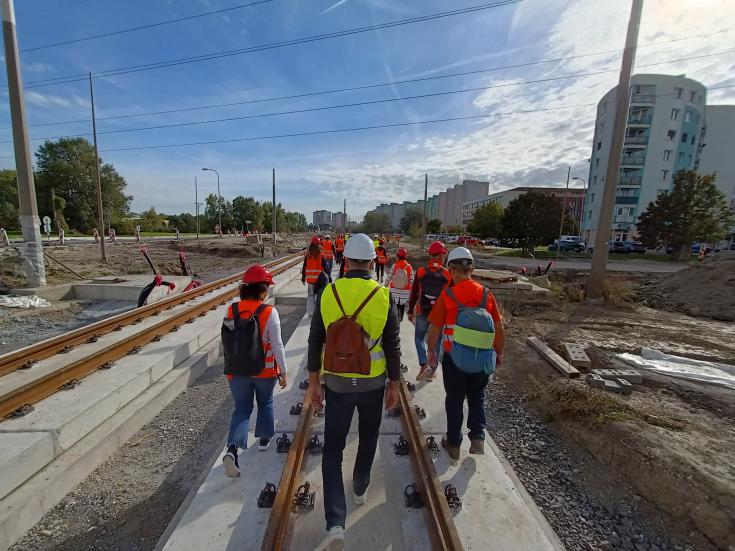
In October 2024, lead partner West Pannon Nonprofit Ltd. organised the first study visit for the CycleRight project partners to Sopron, Hungary. CycleRight is an interregional cooperation project that aims to improve cycling policies by sharing good practices and knowledge on climate-resilient, accessible, and safe cycling infrastructure. Eight study visits are organised in each participating region to exchange experiences. The best practices of these regions will be fed into a Climate Resilient and Inclusive Cycling Planning Guide. Read on to discover the cycling highlights from Sopron and its surroundings.
Urban mobility insights from Bratislava and Budapest
On the first day, project partners visited the beautiful venue of the Primate’s Palace in the City of Bratislava, where they got an overview of the city’s transportation system and urban mobility efforts from Martina Cíferská, Deputy Director of Transport Section; Karolína Marcinová, Head of Department of Pedestrian and Bicycle Transport; and Michal Dekánek, Director of Transport Section at Bratislava Transport Company. The speakers shared how they create a more sustainable and livable city by encouraging a modal shift to cycling. Mr. András Vágány from the BKK Centre for Budapest Transport added insights by presenting how Budapest, another capital city facing similar challenges, is tackling urban transportation issues through its Sustainable Urban Mobility Plan.
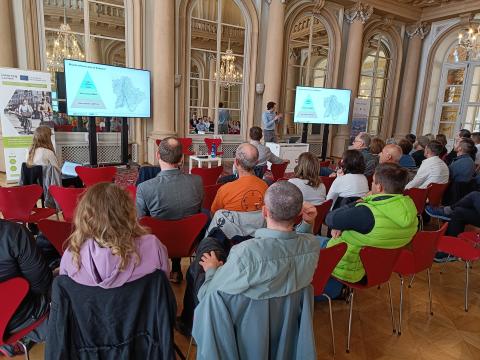
Afterwards, Pavla Štefkovičová & Christian Berger from the baum_cityregion highlighted some example projects of cross-border mobility in Bratislava and its surroundings, such as the VysoMarch cross-border cycling bridge over the Morava river, which opened in 2022.
Saving costs by integrating cycling into infrastructure projects
In the afternoon, participants went on a field trip to the construction site of the new Petržalka Tram Line in Petržalka city borough. Here, they observed how important it is to incorporate cycling elements in new infrastructure projects from the very beginning, highlighting how this planning approach is easier and more cost-effective.

Engaging youth in cycling
To conclude the first day, participants visited the Szigetköz region, an island on the river Danube, where Zoltán Fűzfa and Zoltán Papp from the Trout Circle Association introduced their activities and the basics of operating their multi-modal fleet of bicycles and canoes. These are used for nature-based tourism experiences and youth awareness-raising.
On the second day, participants gathered at Hotel Pannónia in Sopron to listen to a moving presentation by Erzsébet Pénzes, CEO of Hungarian Cycle Tourism Association. She presented BringásVándor - Explorer Bike Camp, a nationwide initiative that empowers young people through a travelling bike camp. The camp is equipped with a fleet of 1.400 bicycles and 200 active tour guides and receives support from the State Secretary for Active Hungary.
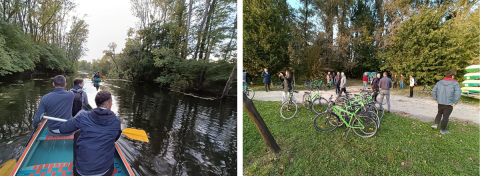
Cycle infrastructure data for safety and better planning
On the topic of safety, Leonid Ljubotina from the University of Zagreb, Faculty of Transport and Traffic Sciences briefly introduced us to the CycleRAP methodology for evaluating road and bicycling infrastructure for safety. He also presented the SCRT Safe Cycling Routes Toolkit, a GIS-based online decision-making support toolkit, developed in the framework of the Interreg Danube SABRINA project.
To reflect on the information seen so far and the transferability of good practices, Aleksander Buczyński, Policy Officer at European Cyclists’ Federation ECF, led a cross-surveying workshop and explained the potential behind the Quantifying Europe's Cycling Infrastructure tool (QECIO), which uses OpenStreetMap to assess various types of cycling infrastructure across Europe.
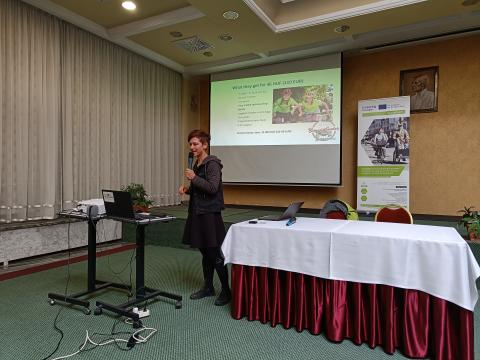
Improving accessibility for people with special needs
The final event of the study visit was a field trip to the Fertőd area. The group stopped in Hegykő to discover its cycling-friendly service network before continuing to the Fertő-Hanság National Park's visitor centre at Lászlómajor. There, András Vissi, CEO of Scardobona Consulting Ltd., explained how to provide an experience for children with special needs based on his experience gained in the Interreg AT-HU VeloRegio project. Additionally, Attila Fersch, Deputy Director-General at Fertő-Hanság National Park, shared valuable insights on creating accessible ecotourism opportunities for people with special needs, showcasing designed equipment on site, like the park's accessible bikes.
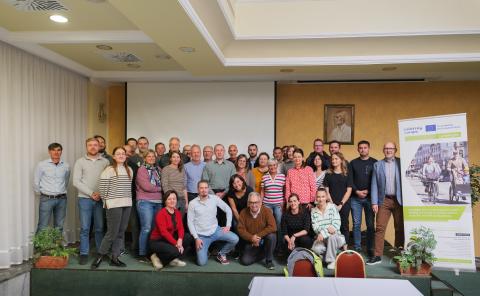
The organisers hope that project partners and their stakeholders returned home inspired, with new ideas and enthusiasm, looking forward to participating in the seven upcoming study visits to be organised!
